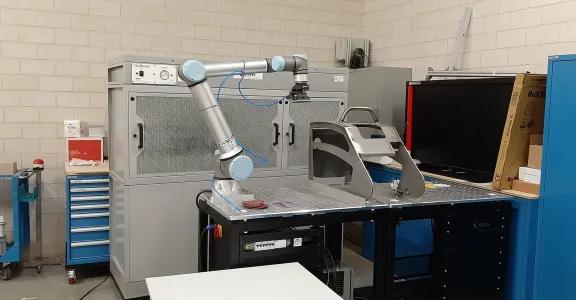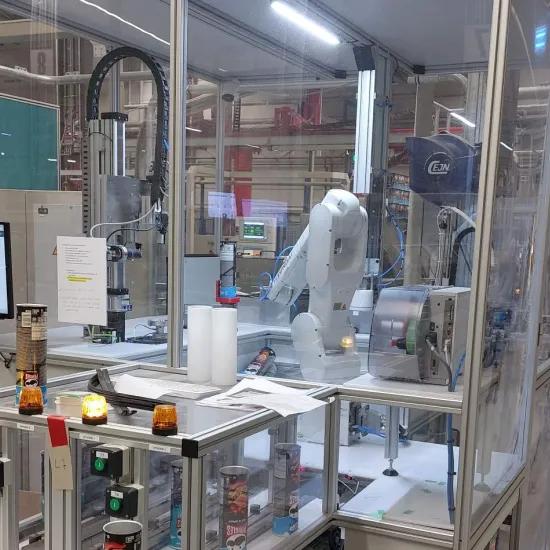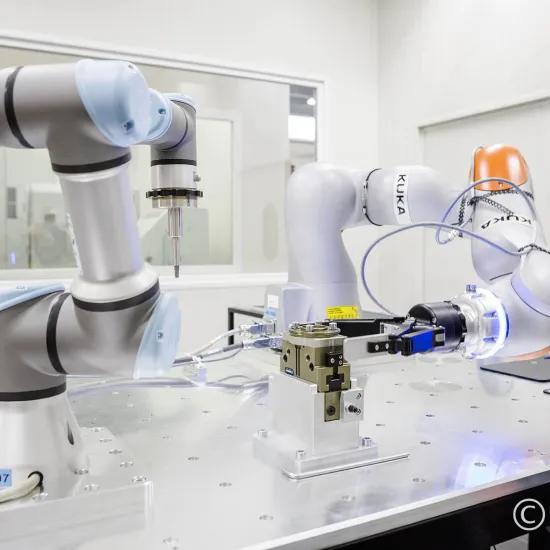Malmar is a metal processing company with a wide range of products for numerous customers and strives to relieve and unburden its customers. Malmar consequently has a diverse set of processes at its disposal, such as laser cutting, bending, milling, welding, painting and assembly work. The company wanted to improve working conditions and increase the quality of the pieces, and decided to find out whether one of its products could be automatically post-processed.
Malmar visited the Sirris demonstration factory in Diepenbeek and saw the possibilities of cobots for sanding and grinding parts. This prompted them to work with the experts at Sirris to investigate the possibilities of cobot working for one of their products, namely the ‘hoods’. After welding with a cobot, these components still require a manual finishing step for the welds. Grinding the weld seams is not only labour intensive, it is also fairly monotonous work, and the quality is somewhat dependent on the operator.
Feasibility tested
Sirris was commissioned by Malmar to investigate whether a robot with power feedback would be able to finish the welding within the specified time. A fully automated process was not a must, but taking the heavy work out of the operators’ hands was, so that they can control the cobot, as well as carry out the final checks and remove small defects. The company also wanted to know whether the welding spatter could be removed. Finally, Malmar wanted to get an insight into the programming effort.
Sirris built a test rig with a UR10 cobot using the parts from Malmar, testing both an eccentric sander and an angle grinder. Both the visual quality of the finish and the processing time were evaluated.
The tests showed that finishing the welded hoods is quite feasible. The remains of the spot welds and weld spatter could be neatly removed. The combination of an angle grinder and eccentric sander was, as expected, considerably faster than the full finish with an eccentric sander and made it possible to finish the pieces within the predefined takt time.
Priority to ease of use
Ease of use is still one of the most important specifications when considering future automation. The feasibility test conducted by Sirris was therefore not only intended to assess the result after cobot working, but also to evaluate the deployability and ease of use. The proposed combination of cobot, cobot software and add-on proved sufficiently user-friendly to generate the paths and set the forces relatively quickly.
Based on these test results, Malmar finally decided to invest in cobot grinding after an initial in-vestment in cobot welding. This will help the company increase productivity and continue its growth.




